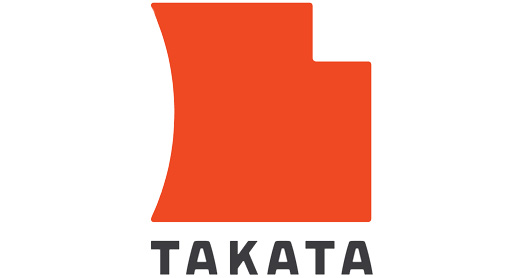Takata Corporation is a Japanese maker of a irbags and other automotive safety devices that has had a bad accident. It is recalling 53 million cars to replace defective airbag inflators that have caused six deaths and over 100 injuries around the world. The cost will be somewhere between ¥12,400 and ¥18,600 per vehicle, according to industry experts.
irbags and other automotive safety devices that has had a bad accident. It is recalling 53 million cars to replace defective airbag inflators that have caused six deaths and over 100 injuries around the world. The cost will be somewhere between ¥12,400 and ¥18,600 per vehicle, according to industry experts.
That means the company will have to come up with as much as ¥986 billion to pay for the recall. That’s a lot for Takata, whose entire revenue for the fiscal year ending in March 2015 was ¥643 billion. The question is where will Takata get the money?
We think the best way to answer that question is to consider where Takata could raise funds (potential sources) and when Takata could get them (probable timing). The table below summarizes the approach we use.
Let’s see how it works for Takata. Internal sources of funds are those the company controls, while external sources come from other firms. Immediate sources of funds are readily available – in about ten business days or less.
Takata has ¥69 billion in cash and ¥22 billion in investment securities, which it most likely can access within ten days. It’s not a commercial paper issuer, and its latest annual report doesn’t mention any unused bank lines of credit. So we can’t know how much immediate external funding is available to the company.
In this framework, near-term means funds that begin to become available about 11 – 120 days in the future. Internal sources include sale of assets that are not integral to the company’s strategy, which we call surplus assets. Takata hasn’t said it’s even considering asset sales, so it’s difficult to know what to make of this potential source of funds.
Internal sources also include operating efficiency (cost cuts) and cash flow efficiency (working capital, capital spending, and dividend cuts). Takata talks about cost cutting but without targeting specific amounts, and it has no apparent plans for reducing working capital or capital outlays. Takata is suspending the dividend, which will save ¥2.5 billion a year.
Takata’s customers might be a source of working capital funding. If the automakers, who actually do the recall work, agree to delayed recall payments from Takata, that could generate a lot of cash. But once again the company hasn’t disclosed any concrete plans for getting extended terms from the car companies.
Takata may have trouble tapping external sources of funds in the next few months. Although its rating from the Japan Rating Agency remains A-, the company’s bond prices are trading at a 25% discount to face value. Takata talks vaguely about “pursuing a range of measures to…strengthen the Group’s financial position”, but doesn’t say what they are.
Takata took ¥59 billion in special charges related to the recall this fiscal year, driving it to a ¥29 billion net loss. With only ¥152 billion of shareholders’ equity and the number of cars being recalled climbing rapidly, the company is dangerously close to insolvency. It’s hard to see the debt or equity markets filling Takata’s funding gap — at least until they have had time to study the trend in recall costs.
The intermediate time frame is out beyond 120 days. Internally this means selling assets that were core before the need for funds occurred. Takata makes other products like seatbelts and child seats, and it might be able to sell one of those businesses.
But creating a separate business from a successful product line is challenging, and the financial trade-offs between cash proceeds from selling a business now and cash flow from keeping the business over the long term are difficult to evaluate. So it often takes a long time to make the decision to do a major asset sale, find a buyer, and get paid. At this stage in its troubles Takata has no apparent plans to sell one of its other product lines.
Of course Takata could always sell itself to another company. That is what we mean by M&A as a longer-term external source of liquidity. Another auto-parts maker with greater technical and financial resources might prize Takata’s products and customers enough to buy the entire company, but it would take some time to find a buyer willing to assume Takata’s tremendous liabilities and structure a workable deal.
So does Takata have the resources to meet the liquidity demands of its massive airbag recall? We can’t say; our framework doesn’t really produce an answer. That’s partly because Takata is so vague about its plans and partly because there are so many uncertainties about the cost and timing of the recall work Takata has to do.
But even if it doesn’t have all the answers in this case, our framework asks the right questions. When you’re analyzing the potential sources and probable timing of a company’s sources of liquidity it’s a good tool to use. For a company with developing liquidity problems like Takata, it’s a good approach to survival planning.

